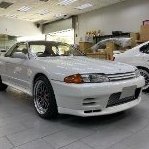Suspension/handling Articles
Announcements
-
Similar Content
-
Latest Posts
-
99.9% of them are viscous diffs. The 0.01% are helicals. They were only option-able in the series 2, as well. I have redline heavy shockproof in my helical. It seems... fine? I don't think anyone is ever going to know until something really breaks and at that point I'm not sure anyone will blame the oil. I just chose it because it's extremely heavy duty and my car will see not-road-legal duty for it. I've also had sadness with various diff oils in the past sweating out everywhere and/or other 'fun' things, with clutch diffs. Given you have a 1.5 way on the shelf, I'd not even bother with the diff in the car and just get to tinkering with it. I would spend the $90 on oil toward the labor of someone else putting the diff in if time poor even lol.
-
By drifter17a · Posted
I believe mine is helical and not clutch type. During drifting one wheel was spining as if it was open diff so bought kazz 1.5 way and has sat on my shelf for the past 5 years as I want to learn shiming process and do it myself in meantime thought I change the diff oil hence post here. So any 75-90? i am pretty sure r34 are helical not clutch lsd as standard . That is gtt ones -
By drifter17a · Posted
Throw between gears are so much that is getting annoying. I have pro short shifter on my mx5 and e36 and love it . Skyline is getting unbearable would syncro issues and short shifter is no no? Anyone mind explaining a little on why before i buy cube -
No. Well, some people "seem to use redline shockproof in the diff". Most do not. I would only contemplate it if you have badly worn CW&P gears. And no. No-one in their right mind has ever put ATF into a diff. Any normal diff/gear oil of the right viscosity will do. Whatever takes your fancy. Castrol, Nulon, Penrite, Redline MT range. Whatever. It's just gears. 75W-90 or 80W-90 is typical. I think that GL-5 is hard to avoid these days, although I think that a GL-4 is probably preferred, given the vintage of the equipment. At least Redline offer a number of GL-4 oils. If you have a clutch type LSD instead of the VLSD, then of course you need a proper LSD oil. Anything from any of the same names above. If you have a helical LSD, then it does not require LSD oil, and the recco is the same as for the VLSD. You don't want the LSD friction modifiers in the oil for a non-clutch type LSD if you can avoid it.
-
You may want to list it up for a little higher - This price is much lower than you may realize. Here you're pretty much selling to people who most likely already have these things on their own rigs. S chassis people eat this stuff up like you'd not believe.
-





Recommended Posts
Create an account or sign in to comment
You need to be a member in order to leave a comment
Create an account
Sign up for a new account in our community. It's easy!
Register a new accountSign in
Already have an account? Sign in here.
Sign In Now